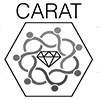The Heyrovsky Institute and HZDR intensify their cooperation
The Helmholtz-Zentrum Dresden-Rossendorf (HZDR) and the J. Heyrovský Institute of Physical Chemistry (JH-INST) in Prague want to expand their existing cooperation by founding a joint laboratory and a training center for 2D materials. On November 14, 2022, the scientific directors of the two institutions, Prof. Sebastian M. Schmidt and Prof. Martin Hof, signed an addendum to the existing memorandum of understanding from October 2019. At an accompanying two-day meeting, physicists from Dresden and the Czech Republic want to explore possible joint projects.
"Without experienced and motivated scientists, even the best research infrastructure cannot achieve sustainable results. It has been shown repeatedly that the long-term success of an institution depends on its ability to attract talent. We are proud that researchers from more than 70 countries contribute their skills to our center. With the planned training center, we are strengthening these structures, especially in the field of two-dimensional materials," said HZDR Scientific Director, Sebastian M. Schmidt, during the signing ceremony.
The targeted manipulation of the electronic and optical properties of atomically thin 2D materials such as graphene opens up numerous interesting possibilities in basic and applied research, stresses JH-INST Director Martin Hof: "Sensor technologies, electronics, energy storage – research on two-dimensional materials can create improved materials in all of these fields. In recent years, our two institutions have greatly expanded their expertise in this area. By combining our know-how, we can strengthen our outstanding position."
Joint workshops, lab rotations and special courses in the training center are intended to introduce the next generation of doctoral students to this promising field. The focus is on the influence of defects on the material properties, which can be both disadvantageous and beneficial depending on the application. Generating defects in 2D materials in order to improve them will also play a central role in the joint laboratory. The two partners combine special microscopes and spectroscopy systems at a facility of HZDR’s Ion Beam Center, which is particularly well suited for the analysis and modification of ultra-thin layers thanks to the use of low-energy ions. In the long term, this should create a unique environment for investigating defects in 2D materials.
The Helmholtz-Zentrum Dresden-Rossendorf (HZDR) conducts cutting-edge research with a long-term focus in the fields of energy, health and matter. More than 670 HZDR scientists are building bridges between physics, chemistry, biology, geoscience and medicine to solve some of the great challenges faced by modern-day industrialized society.




















